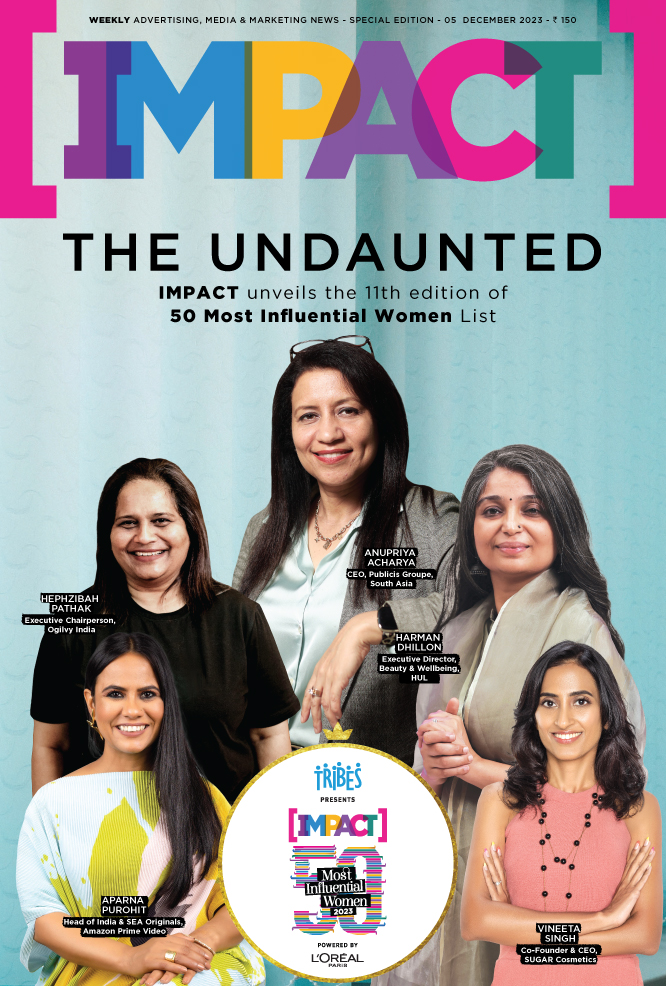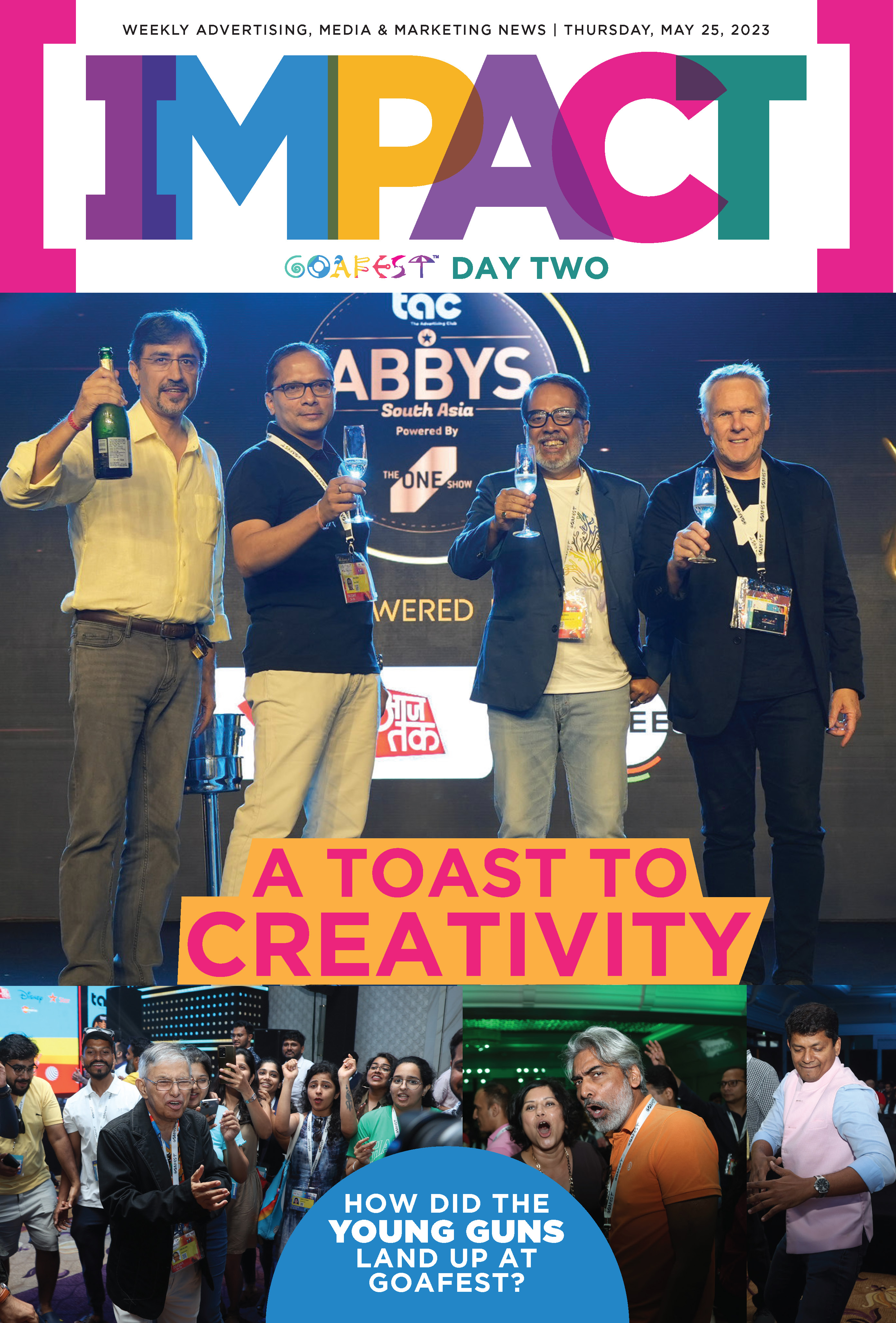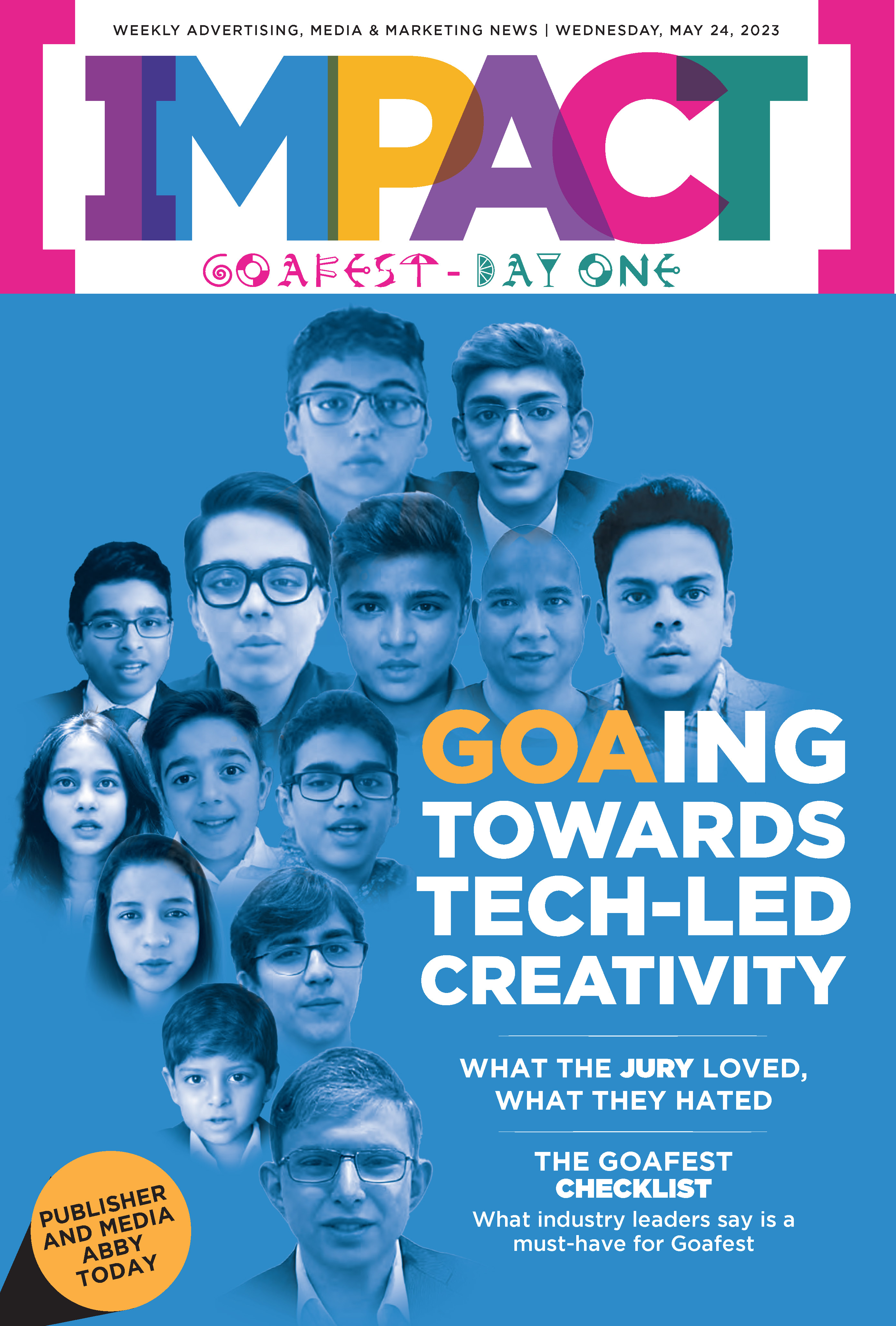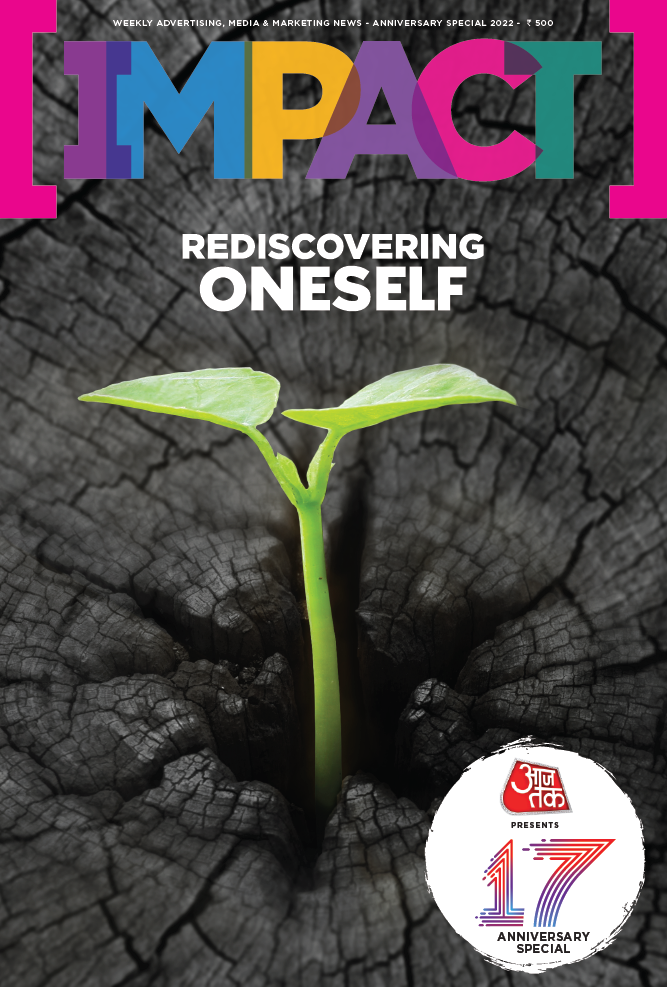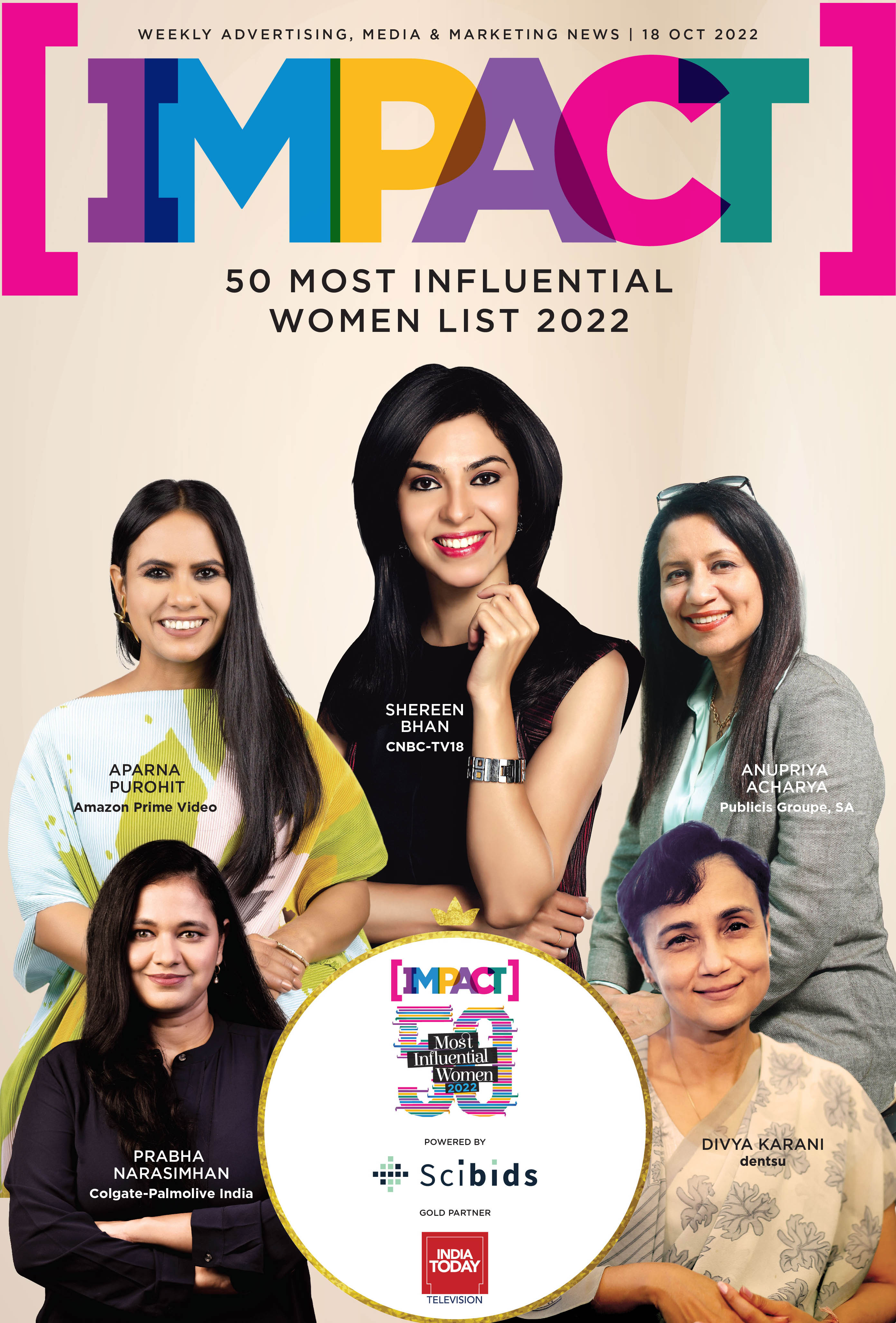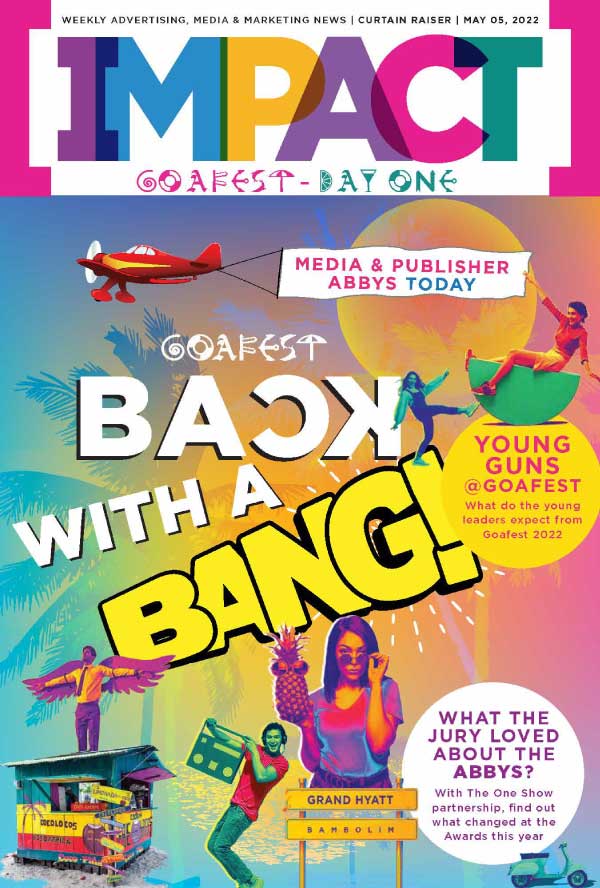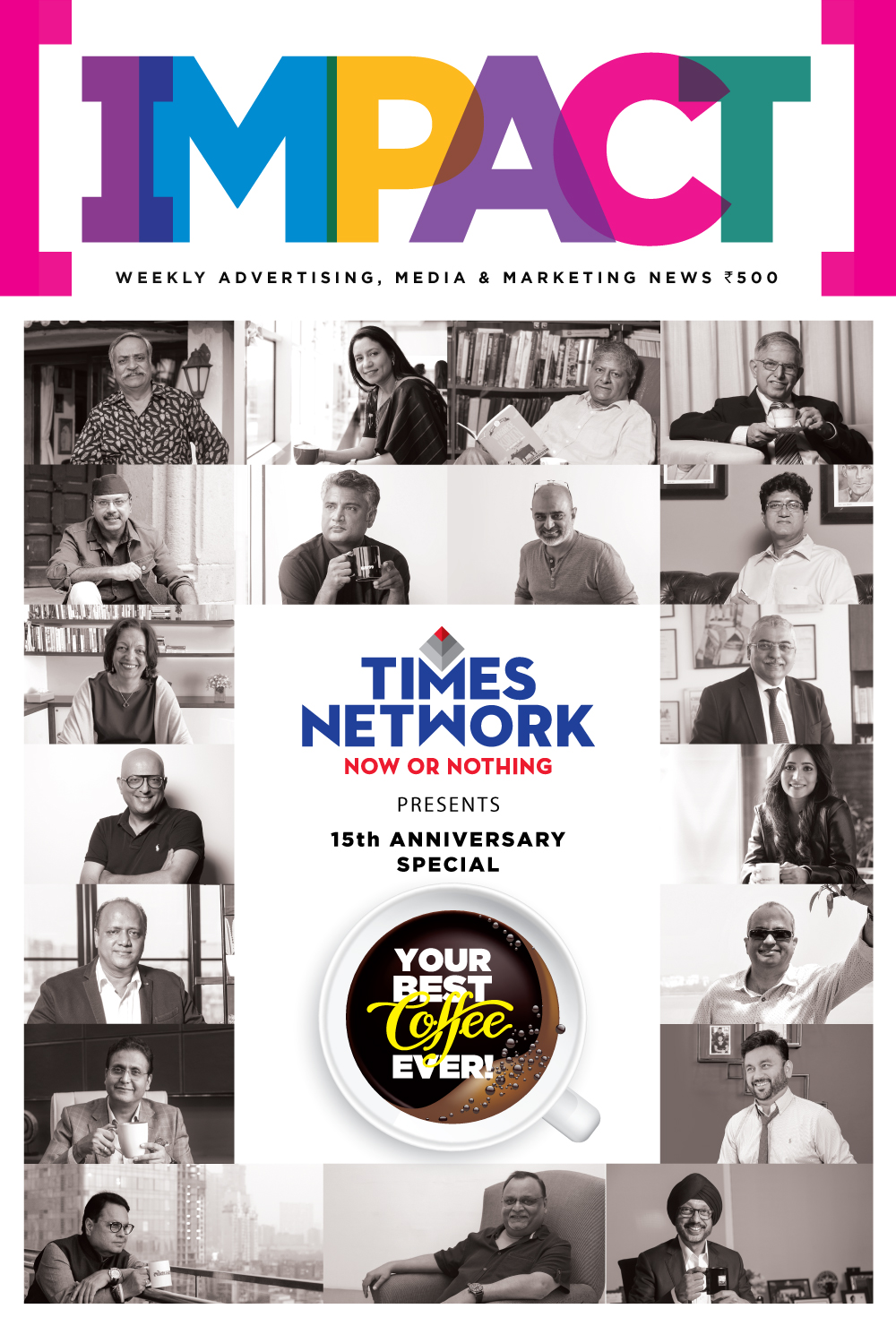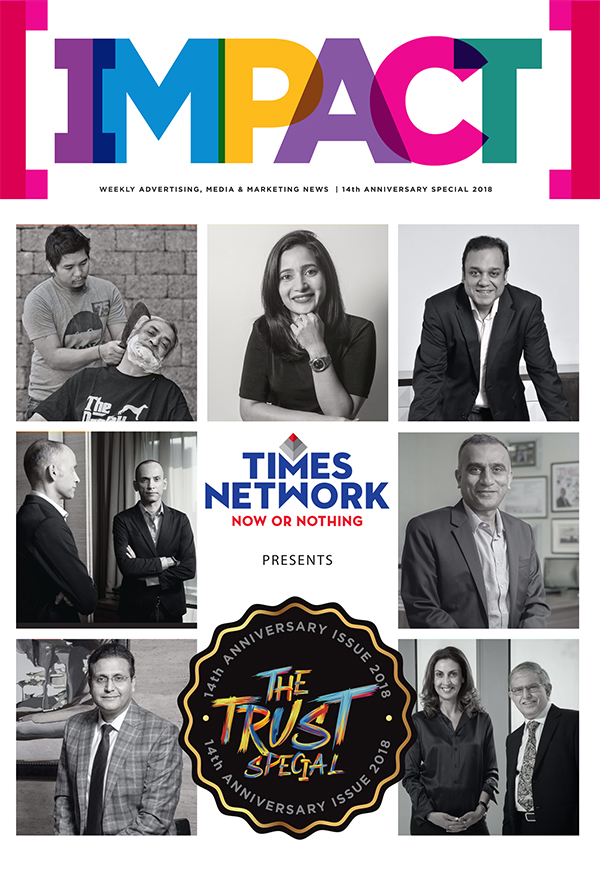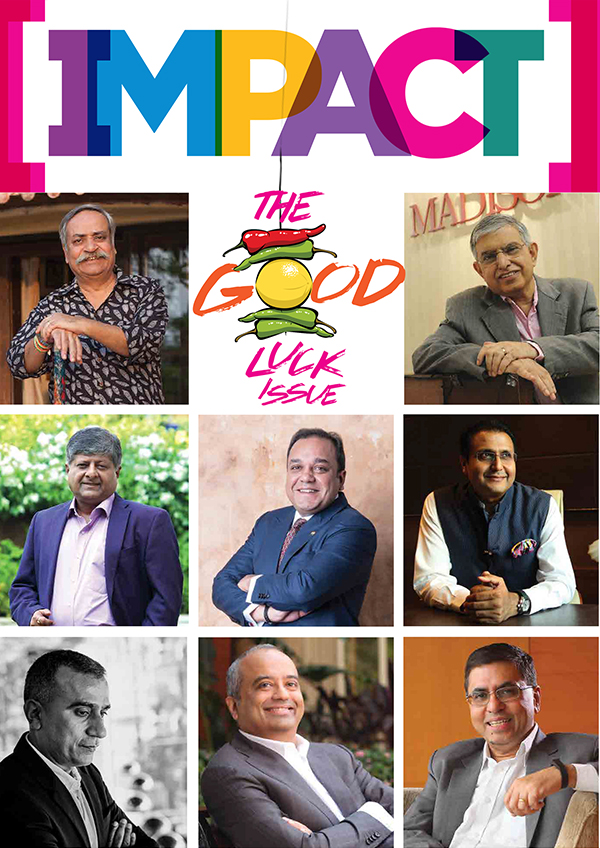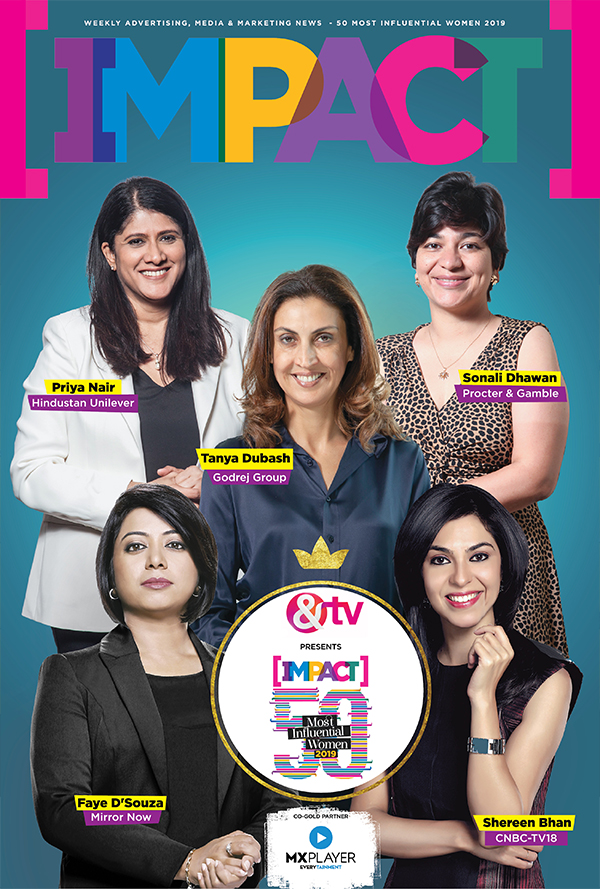Alfred Hitchcock’s 1958 masterpiece Vertigo was the first film to use CGI, blending reality and fiction. It was used in the opening credits of the film. Computer-generated imagery, or CGI, has come a long way since then, often associated with big-budget movies. In marketing, ‘faux OOH’—a term coined in the West, or simply known as ‘CGI Marketing’ in India—has become more than a fad and has stuck through for over a year globally. As it gains more prominence in India, we explore the progression of CGI marketing, the creative and execution process, and the notable campaigns that have cropped up, while forecasting the possible future applications, such as the integration of CGI into Virtual Reality (VR) marketing.
India has seen its own wave of hyper-real visuals: a giant panda riding a BEST bus in Mumbai, a colossal mannequin beside the Taj Mahal, and oversized biscuits cruising down the sea link. These eye-popping illusions marked the rise of CGI marketing on home turf.
More recently, this visual storytelling technique has become a preferred creative tool for Indian brands. Amul, the Indian dairy giant, has begun using CGI in its campaigns to mark international expansion. With its signature wit and warmth, the Amul girl has been spotted sharing a cup of milk with the Statue of Liberty, standing in front of Spanish landmarks, playing the Portuguese Guitar at the Praça do Comércio and even donning an Argentina jersey to celebrate their Copa America win in 2024, each executed with clever CGI that allows the mascot to travel and interact with faraway icons without ever leaving the screen. These campaigns aim to foster both nostalgia and cultural pride while signaling the brand’s growing global presence.
Beauty brands have also jumped on the bandwagon with striking executions. Vaseline recently launched a digital-first CGI campaign for its ‘Suncoins’ initiative, turning minutes of sun exposure into a visual currency—blending health, skincare, and gamified rewards into one cohesive visual narrative. The Face Shop India made waves with an arresting CGI ad that showed its cream tubes towering over the Taj Mahal, with product flowing from the tubes and oozing across the marble, almost turning the monument white. The hyperrealism made it go viral, and also nudged the viewer to associate the product with skin clarity and softness, albeit in an unconventional way.
Outside of beauty, FMCG and consumer goods have also started exploring CGI’s creative potential. Linc’s Pentonic Pen campaign had its product hover across Mumbai’s skyline and a digital billboard in Kolkata, literally positioning the pen as ‘the one that writes India’s tomorrow.’ In another instance, Keekoo Noodles debuted a 3D billboard in Shillong, where a CGI-rendered character floats above a bowl of noodles, grabbing attention in India’s Northeast. Gillette India used massive CGI blades on outdoor hoardings to explain the engineering of its Mach 3 razor, while Xiaomi brought its Redmi Note 14 to life with dynamic CGI visuals across hoardings in metro cities, adding energy and movement to a static advertising medium.
The surge of CGI-led campaigns in India signals more than a passing fad—it’s a new way for brands to blend fantasy and realism in stories that feel believable yet impossible in the physical world. Its true power lies in agility and versatility. From giant pens to flowing cream or mascots sipping milk abroad, ideas that would be logistically or financially unfeasible become scalable, repeatable, and endlessly shareable. In a hyper-scrollable world, CGI may just be the new billboard—bold, surreal, and impossible to ignore.

The Emergence of CGI Marketing
One of the primary reasons why the emergence of CGI marketing took off was it blends reality. Preetham Venkky, Chief Digital Officer, DDB Mudra Group, highlights that it takes the ordinary what one may engage with daily and makes it ‘fantastical.’ It associates an element of fantasy with it. While we’ve moved into the genre of fantasy, the initial wave was a PR wave. If you saw the Maybelline work, you would have thought that it didn’t look like a CGI marketing campaign. It looked like they did an installation activation. They were crossing the gap of the uncanny valley to make it hyper-realistic with intent, so that at first glance it looked like a real-world activation, though it wasn’t,” he adds.
Characterised by hyper-realistic visuals created using computer software, CGI marketing is now a strategy for brands across industries. “More than unreal, they look surreal. When we put Po from the Universal Pictures movie, Kung Fu Panda, on a BEST bus riding through Flora Fountain in the Churchgate area, the visual that came out was surreal for people. My three-year-old kid asked me saying, ‘Papa, where is this Panda going?’ I had someone else asking ‘You guys have put such a big Panda on a bus, how would it go if there was a bridge on the road?’ Because this person genuinely thought that we put an installation there and it’s not CGI. As a brand it depends on you whether you want your CGI to look towards the unreal or the real, that is the brand’s call,” states Mitesh Kothari, Co-founder & Chief Creative Officer, White Rivers Media.
A factor that remains constant with the CGI creatives is the famous locations that create a sense of familiarity. Manish Solanki, COO and Co-Founder, TheSmallBigIdea mentions, “By leveraging relatable spaces like iconic landmarks, brands can instantly captivate their audience and drive high engagement. This relatability fosters organic trends and ensures that campaigns resonate deeply with viewers making a memorable impact”.
The primary differentiator of a CGI creative is its attention-grabbing ability. Siddharth Devnani, Co-Founder & Director, SoCheers, reckons, “CGI creates scenarios impossible or impractical in reality. The novelty and visual impact of CGI grab attention and spark emotional response, leading to better recall and brand association”.
The engagement garnered is also what the brands look forward to. As Kishan Jain, Director, Goldmedal Electricals says “If the concept is apt for the product, and if the integration is done seamlessly, these creatives can also get high engagement because many people can identify these locations and become curious about the integration”.
According to Arvind Kumar, GM - Marketing, Confectionery, DS Group, hyper-realistic visuals are often impractical to execute or may require a hefty budget, but with CGI in the picture, not anymore. “Eye-catching brand integration in iconic locations is impossible through traditional methods. Imagine product placements in renowned landmarks within the budget and adaptable to diverse platforms. For example, Pulse Candy’s Christmas magic relied on CGI to spread holiday cheer with innovative visuals,” he says.
CGI campaigns and creatives are already being used for several objectives for top-of-the-funnel activities, other than just grabbing attention. AJIO has used it to raise awareness for their new category called ‘House of Ethnics.’ The brand created CGI video assets that bring in the generated imagery and traditional ethnic wear to create a contrast. Arpan Biswas, Chief Marketing Officer, AJIO states, “What CGI does for us is, firstly it reduces the go-to-market time by five to six days. Secondly, the creative liberty to exaggerate, the life-size mannequin is much bigger than the Taj Mahal itself. Primarily, these would be the reasons, and it’s also slightly cheaper compared to doing a traditional shoot where you create a mannequin that big, which obviously won’t look real, and then get a helicopter to throw in a dupatta on it. That’s not feasible. That’s why we wanted to do something slightly different and trendy”.
Unrestricted creative freedom and traditionally challenging or cost-prohibitive executions have led to the emergence of CGI creatives. Subjective factors that benefit each brand, and precise control over imagery have led to the emergence of CGI Marketing outlasting the short-lived period of trends.
Although this emergence also means that brands creating CGI campaigns to break away from the clutter are also increasing and this brings problems of its own. Augustus Daniel, Marketing Head - Oral Care, Dabur India believes, “There is a lot of clutter with the similar execution by a lot of brands. As the novelty factor fades away, brands must leverage this trend beyond just top of mind & topical activation”.

Creation Process
The process of crafting CGI imagery involves a combination of artistic vision and technical expertise. Skilled artists utilise specialised software such as Autodesk Maya, Blender, or Cinema 4D to model objects, textures, and environments. These elements are then rendered to produce lifelike visuals that rival reality itself. Advanced rendering techniques such as ray tracing, further enhance the realism of CGI images by accurately simulating the behaviour of light.
There is an extensive pool of talent required to create a CGI campaign. The more nuanced the campaign, the requirement for skilled talent increases. Kunal Luhar, Co-Founder and CEO, 5W1H states, “The process of creating a CGI campaign involves a pool of resources: a creative director, scriptwriter, storyboard artists, director, producer, DOP, 3D modellers, animators, editors, and client representatives”.
Jain adds, “The process for creating a good CGI creative involves looking for the best locations that suit the product, 3D modelling, texturing, lighting, and the final animation that brings the ad to life. The traditional client-agency relationship may also involve external partners such as an animation studio, depending on the campaign and in-house resources.”
Devnani states that conceptualisation starts with a campaign idea, and creative agencies collaborate closely with CGI specialists. Then comes storyboarding, pre-visualization, production, and post-production. All these processes are helmed by professionals that need to be in sync. Kothari mentions, “The process involves working with a team that might go and shoot at the real place, or you find certain video footage that is usable for you and the brand. We get a sense of mixed reality, and then it moves into 3D modellers, graphic artists, compositors, and animators. They all need to work in synergy technically to bring alive the vision that the writers, designers, and strategists engineered in the first place. The process for a CGI campaign is not too far from the other visual asset creations that we do. But the key difference that comes is a very artfully modelled element inside the real world”.
The technology bit coming in is where the magic happens but it is also the crucial point where it may get a bit complicated. This factor also improves the efficiency of campaign creation and visual appeal. Venkky states, “From a technology standpoint, there are some market forces at play. You have tools like Blender that have become free, and the cost of even using Unity, Maxon, or Cinema 4D has come down tremendously. But it’s not just the cost, it’s also that technology has taken leaps and bounds in the last one and a half years, especially because of LLMs and largely because of AI. What’s happening is that all of these tools are powered by AI, allowing you to render hyper-realistic worlds without actually spending too much time. You could get something done in just 40 hours”.
He further adds, “With Chat GPT, Midjourney, and Stable Diffusion, the previsualization can be done in a snap. You just have to upload a photo of a particular real-world location and then previsualize it with very realistic-looking stuff within a few seconds or minutes. So first, you come up with a concept. You convert that into pre-visualizations, which are static visualizations. And once you’ve got approval on that, you then get into the actual production of it”.

The Industry Outlook
The CGI Marketing Template has been floating around for a few years now. It may have started as a fad or a topical trend but has become a strategy or another layer in a marketing campaign, like social media amplification or an influencer marketing leg for a TVC. The industry outlook at present is on the optimistic side for CGI Marketing, with varied top-of-the-funnel objectives being fulfilled, and more innovation showing up on and behind the screen.
Kumar states, “These ads are more than just promotions; they offer an experience that sticks with netizens. CGI lets advertisers do this without breaking the bank. The result? More attention, buzz, and a bigger audience—all without the hefty price tag. That’s why these ads have become popular for all the right reasons. Pulse’s Christmas Campaign generated 25 Mn+ impressions, reached 16 Mn+ people, and was viewed by 3.5 Mn+”.
When virality is objective and traditional campaigns seem to fall short, CGI is leading the way. Biswas states, “This was for creating that buzz on social media. There are two things in any campaign, what you are saying and how you are saying it. CGI is how you are showcasing the communication. When it comes to a traditional campaign, generally, until and unless you do something extremely eccentric, things don’t go viral. But we have used the medium of CGI to get that virality. It had got great engagement and recall on social media and then we promoted it as well. But that was done after the main campaign went live. Through the main campaign, we gained a certain reach and frequency. Guys who are engaged with the main campaign were also shown this, just to create that salience, imagery, and recall for the category”.
Speaking of engagement, Daniel says that such campaigns generate high engagement due to the novelty and creativity of seeing familiar places transformed in unexpected ways. The visual appeal captures attention, fostering a memorable connection with the brand. The turnaround speed and cost of the content generated are significantly low compared to normal video production. Combined with its novelty, this gives an amazing combination to activate brands in the digital space.
New launches and expansive penetration can also be elevated with these campaigns. Speaking about a campaign created for a new launch, Smeet Shah, COO, SHOTT mentions, “We did the marketing campaign using new-age technology. This was our 4th launch in the city of Pune. For us, it was important to not only launch but also establish a significant presence in the Pune entertainment and gaming industry. The CGI activity conducted in collaboration with 5W1H helped us massively as it created a high buzz on social media, helping us garner initial footfalls and awareness”.
Technology blends the best of both worlds, a real-world setup and instant viewability, accessibility, and shareability. These creatives can be viewed from phones, unlike an OOH installation, and that aids the virality of the creative. A spokesperson from PNB Housing Finance states, “CGI offers flexibility in the creative process, that traditional media formats may lack, enabling brands to conceptualize ideas and execute them innovatively. Branding efforts that feature larger-than-life elements, set against famous locations, tend to resonate more with people because of their popularity. Additionally, the juxtaposition of unreal elements within these familiar locations sparks curiosity among viewers, ultimately leading to higher engagement levels”.
Devnani says that evolving consumer expectations are a contributing factor to the rise of CGI marketing. “Audiences crave engaging and visually innovative experiences, which CGI effectively delivers. The format readily adapts to various platforms, promoting virality and user-generated content”.
Going forward, we may also see the industry move towards hardcore performance metrics unlike now, as CGI marketing is currently seen as a top-of-the-funnel activity. Kothari states, “Out of the 4 Ps of marketing, CGI allows us to play with ‘Products’ and ‘Promotion’ in a certain way. At some point in time, someone may run it as a hard-performance unit and say, you know what? I raised the attention and garnered the eyeballs. Now let’s just try to understand how it works into our performance or conversions. However, I believe that it could act as a tool to take people to the conversion destination. But then beyond that, the product, merits, and cost will start becoming far more important.
On the other hand, Venkky believes from a conversion asset point of view at the bottom of the funnel, there are less expensive performance creatives that can be executed. According to him, sometimes, as the cost of performance marketing goes up, the cost of creative production associated with performance marketing can also go up. “CGI creatives are still interesting from a reach perspective, so they need maximum impressions. I’m not sure doing this will help at that scale with bottom-of-the-funnel performance as much. But the numbers are strong from the reach standpoint, and it does garner anywhere between 30% to 100% more engagement, organically speaking,” says Venkky.
However, the current high engagement does not call for mediocrity in the space, as the novelty may die down soon. Kothari, states “As of now, it’s extremely attractive because it’s new for the audience. At some point in time, the audience is going to say, ‘Hey, I’ve seen enough of this’. Then it’s not going to get unattractive or the pool is going to lower down. That is when things will be normalized”.

Future Applications
While the current template of a CGI creative may get outdated, computer-generated imagery has been forecasted to make way into other marketing strategies that would go beyond the ongoing template of hyper-real brand integration into a real-world location.
Outlining a few of the next use case applications, Daniel states, “It can be used for virtual product demonstrations that enable users to feel a product in 3D before buying it; interactive websites to improve UX, and social media filters and AR campaigns for enhancing brand experiences”.
While a few use cases are yet to be figured out, the industry seems to be exploring metrics that may resolve apprehensions. Kumar says, “Tracking website traffic, sales conversions, and coupon code usage can answer the question of whether CGI drove desired actions. Sentiment Analysis of social media comments, reviews, and brand mentions would make us aware of the CGI creatives resonating positively with the audience.”
The focus on building real-world experiences for the screen seems to be a constant in the future too. Jain shares, “We would look at virtual events, virtual tours of stores, and augmented reality as use-case applications for CGI technology”. Luhar also chimes in with the thought and says, “Product visualization, interactive 3D experiences, social media filters, and digital billboards and displays offer a unique way for brands to engage with their audience”.
According to Venkky, a natural progression from CGI would be the VR world. He believes much of CGI marketing is about taking hyper-realistic renders as an augmentation of the real world — making the ordinary extraordinary.
“These are good first steps for brands to move into the spatial computing world. I have a feeling VR and AR experiences will become the norm in the next five years. The kind of muscle and content we’re building now is, in a way, training for the future. A natural next step will be AR worlds or AR experiences, especially within MetaQuest 3 or Apple’s Vision Pro,” he says.
Looking forward, the integration of CGI into Virtual Reality (VR) marketing holds immense potential for brands seeking to engage audiences in more immersive ways. We’re already seeing the hype around Apple Vision Pro and by leveraging CGI-powered VR, brands can transport consumers into virtual worlds where they can interact with products and experiences in unimagined ways. Exploring the details of intricate jewellery, exploring a resort in the next vacation destination, or testing a car in the digital landscape, all can be enabled by CGI-powered VR.
The transformative force in the world of marketing has empowered brands to liberalize their creativity and connect with audiences in innovative ways. As the now mainstream marketing tool redefines the boundaries of visual storytelling, we gaze to the future, with the promising integration of CGI into VR marketing.


















